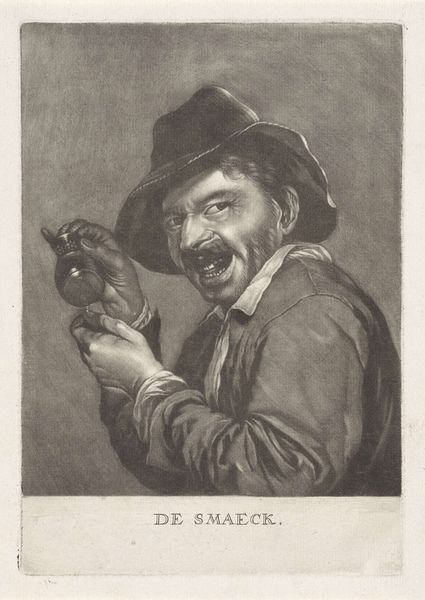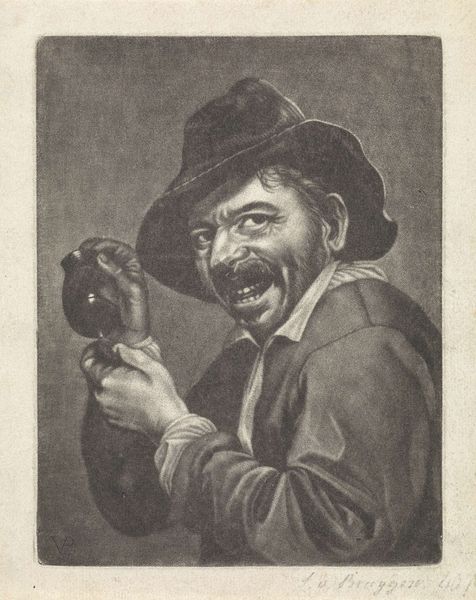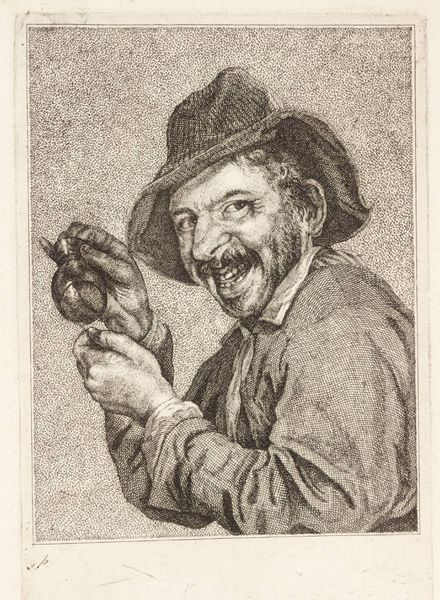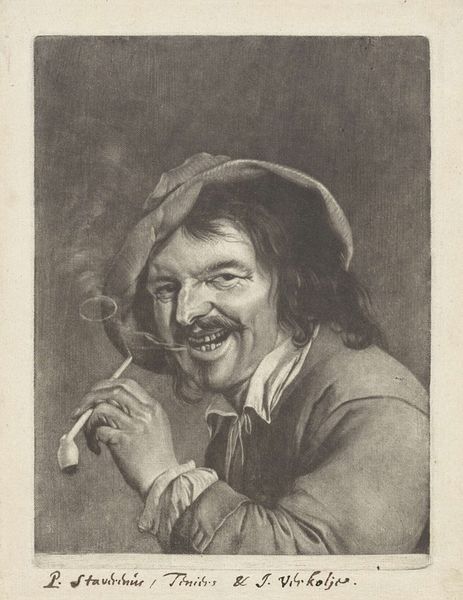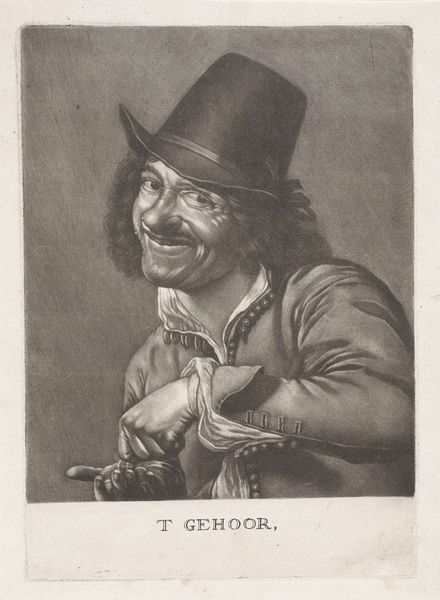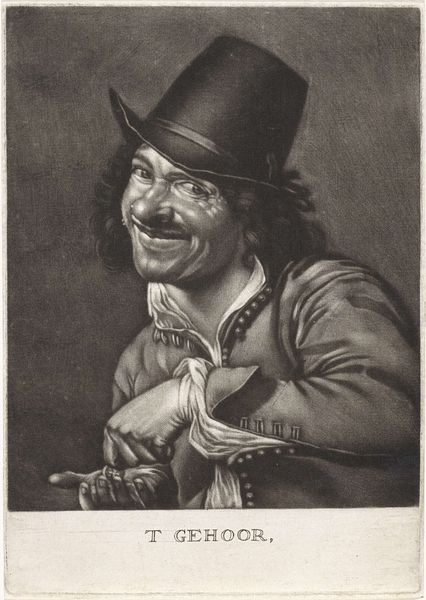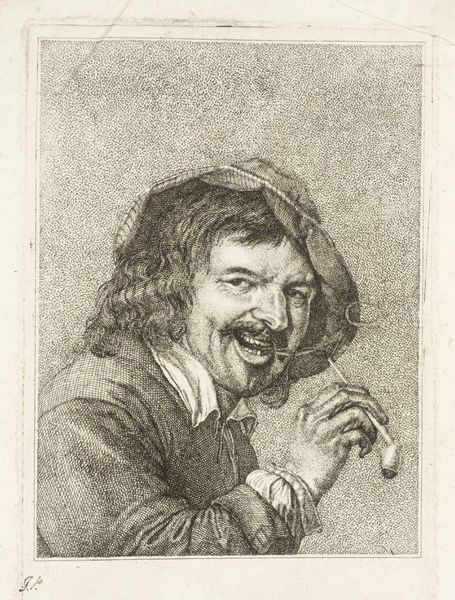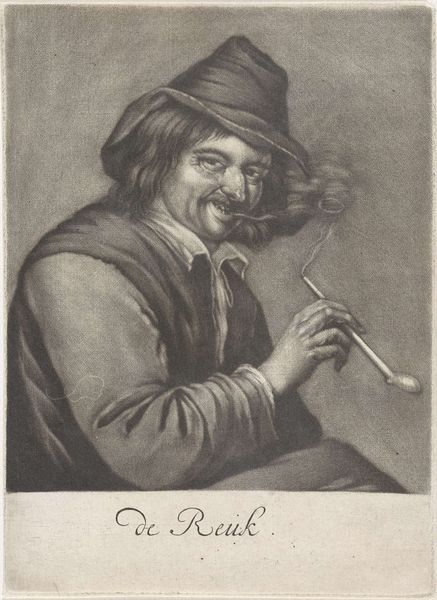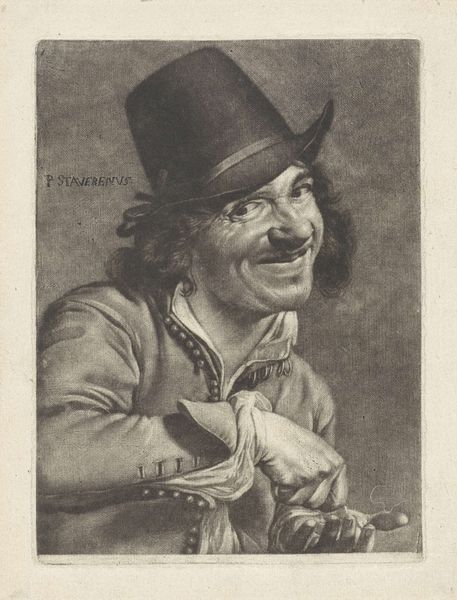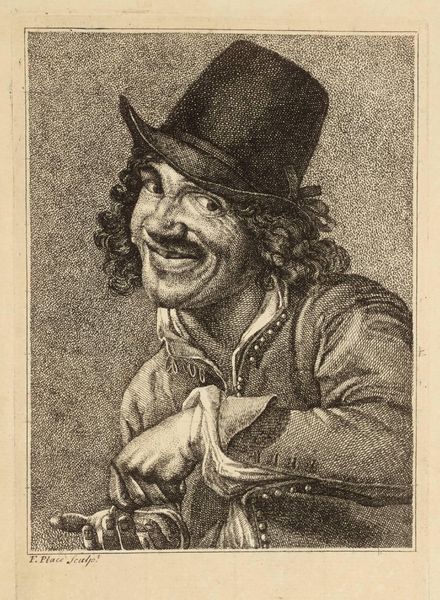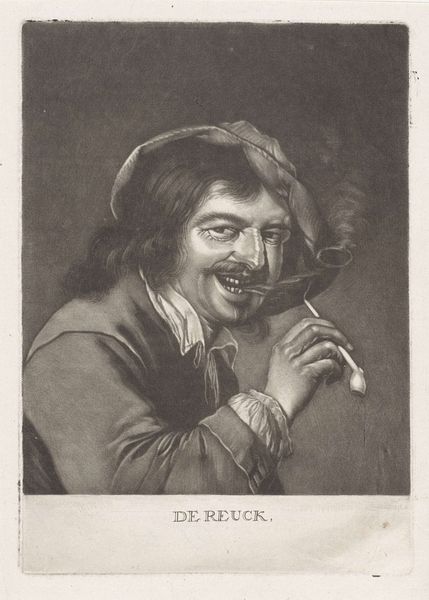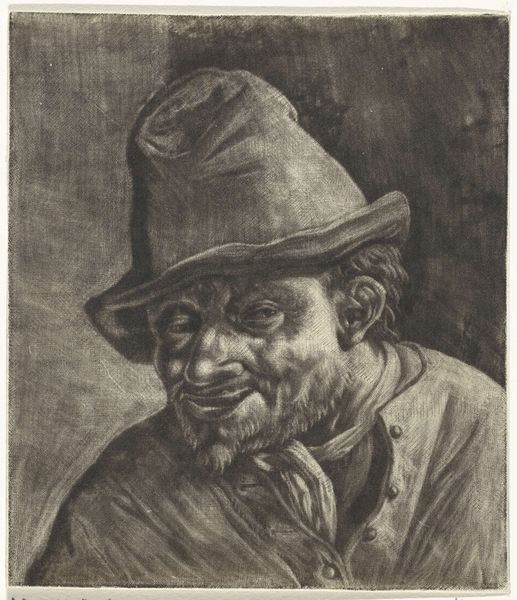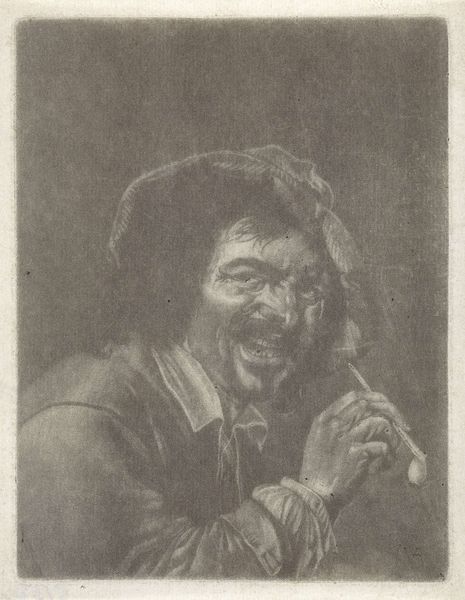
drawing, glass, engraving
#
portrait
#
drawing
#
facial expression drawing
#
baroque
#
dutch-golden-age
#
caricature
#
charcoal drawing
#
charcoal art
#
glass
#
portrait reference
#
animal drawing portrait
#
portrait drawing
#
genre-painting
#
facial portrait
#
engraving
#
portrait art
#
fine art portrait
Dimensions: height 163 mm, width 122 mm
Copyright: Rijks Museum: Open Domain
Curator: This engraving is titled "Man met een leeg glas (de Smaak)" which translates to "Man with an empty glass (the Sense of Taste)," created by Jan Verkolje I between 1660 and 1693. Editor: The first thing that strikes me is the overt grin, somewhat unsettling, and the theatrical quality to the man's expression and gesture. It feels performative. Curator: Well, this print belongs to a series of five senses. This image, the sense of taste, depicts the social consumption of alcohol within the Dutch Golden Age, think about how different tiers of Dutch society utilized this activity. Editor: It’s fascinating how Verkolje renders the material world here. The man’s coarse clothing, the simple glass object…It speaks to a culture increasingly defined by trade, access to global commodities, and also societal perceptions of labor and luxury. The print, itself a reproducible commodity, enters that arena. Curator: Right, the series itself circulates through that very society and in Dutch genre painting, the image of someone drinking or the consumption of alchohol often signifies merriment or social bonding. But is this celebratory? Consider how it functions within the wider pictorial traditions and social structures of the period. Was Verkolje criticizing or commenting on morality through his characters? Editor: That's true. While capturing social practices, consider this was initially a commercial piece, circulating among those able to buy and display such works. How does that context affect our interpretation? Was it mocking lower-class citizens or offering simple pleasures that people can appreciate? Curator: The engraving, like all artwork of its time, was certainly produced within very specific economic, and artistic systems. These influenced not only its creation but also the values and interpretations projected onto it. Editor: Looking at this now, beyond just its historical and market setting, there's an echo of something profoundly human. Regardless of context, this feels very personal, like the momentary lapse where your "taste" changes. Curator: Yes, thinking about all these angles offers us the rich possibility of understanding art beyond a fixed definition or a singular experience. The multilayered contexts—materials, labor, trade and so much more—make art viewing a far richer pursuit.
Comments
No comments
Be the first to comment and join the conversation on the ultimate creative platform.

